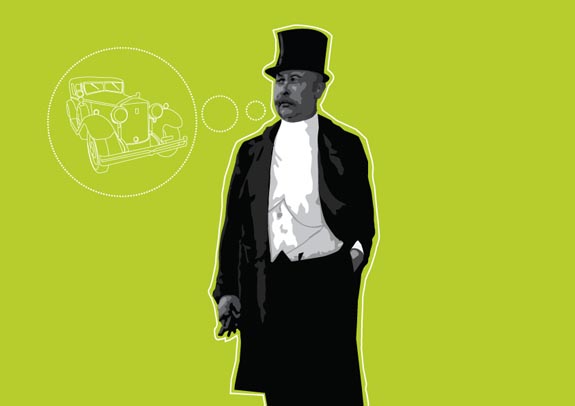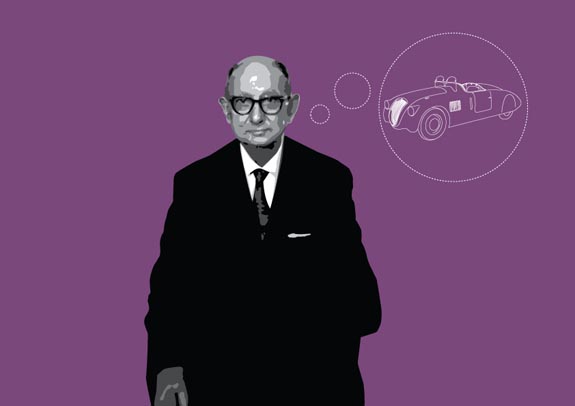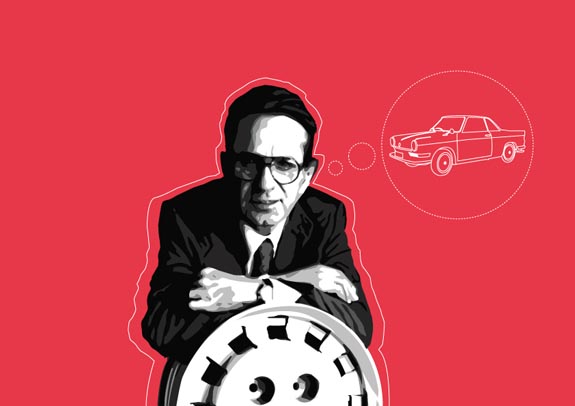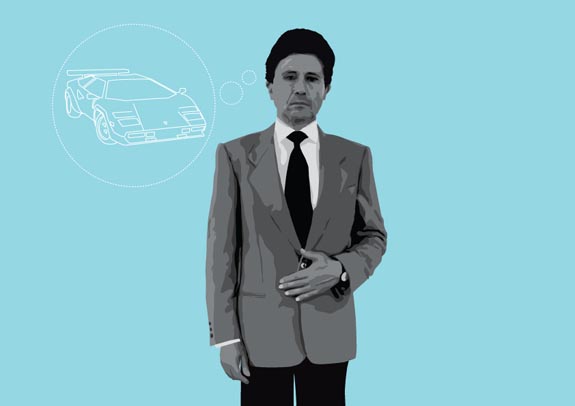" "People just like 500s. We drove down to Italy for the 500's anniversary _ everyone was smiling and waving" What is it that makes Italian cars so special? Liz Seabrook asked the question at the Italian Car Picnic at Honnington Gardens. ["

Style Visionaries: Definitive Italian Designers
Four Italian craftsmen who would define twentieth century automotive style.
Illustrations by Current State

//The Founding Father: Carlo Castagna//
Castagna started out as an apprentice at the prestigious Mainetta and Orseniga workshops in Milan, which was one of the main producers of coaches to European Royalty. When the patron of the company retired in in 1849 Castagna took over the company, renaming it C. Castagna & C. Castagna’s promenade carriages (the nineteenth century equivalent of open-top sports cars) were ostentatiously appointed, passionately conceived and meticulously constructed. Towards the end of the 1800s Ottolini and Ricordi, importers of Benz Quadricycles for Italy, commissioned the first motorised carriages from the master. Castagna set the benchmark that all other European carrozzeria aspired to, and therefore set the tone for Italian motoring for the entire twentieth century.

//The Autodidact: Ugo Zagato 1890-1968//
Ugo Zagato’s legacy is to have created a distinctive, instantly-recognisable aesthetic based on lightweight, aeronautical style bodies. Throughout the twentieth century the ‘Z’ appellation gave client cars a sleek, aerodynamic remix of the base design. Designs like the Alfa RL SS Torpedo, through to the 1938 Lancia Aprilia Sport were shot through with the flowing lines of the modernist movement, and later models, like the Aston Vantage Zagato of the mid eighties remain classics of uncompromised penmanship. Though the Zagato look will never be to everyone’s taste, it remains unconventional and classic. Take a look of some of our favourite z-cars.

//The Populist: Giovanni Michelotti 1921-1980//
Michelotti Began his career as an apprentice at the Farina works in the mid-30s and in the 50s became business partner with Alfredo Vignale. In the 50s and 60s he was one of the most prolific Italian designers – having as many as thirty cars on display on various different stands at the Turin Motor Show of 1960. Whilst working for Vignale he designed the BMW 700 and 1500 Coupés which raised his and BMWs profile greatly – and Michelotti’s innovation and foresight meant that he was the first western car designer to be hired by a Japanese company (he designed a car for the Contessa for the Hino company in 1959). He also worked extensively for Triumph, creating the particularly successful ‘2000’ series and developments like the Triumph Stag. Michelotti may not have had Gandini’s flair for the jaw-dropping stylistic flourish, but was more responsible for disseminating the Milanese aesthetic than any other Italian designer of the century.

//The Genius: Marcello Gandini 1938-//
There was obviously something in the water in Turin during the summer of 1938. Gandini was Born on August 26, just nineteen days after his legendary collaborator and rival Giorgetto Giugiario. Both pensmen would come to represent the apotheosis of twentieth century car design. When Giugiario left carrozzeria Bertone in 1965 Gandini was offered his job. Controversy still rages as to which of the pair was ultimately responsible for the epoch-making Lamborghini Miura of 1968, but Gandini’s early, bold statement was the introduction of the scissor door on the Alfa 33 Carabo concept, which was first shown at the Paris Motor Show at the time of the Miura launch. This, of course was one of the most distinctive elements of the Lamborghini Countach, Gandini’s outrageous masterpiece.
CLICK TO ENLARGE










Sir Alec Issigonis?
I believe I am right in saying that Mr Issigonis was an Anglo-Greek. But I have been wrong before (and I haven’t just googled him). Apologies to all if I am mistaken.